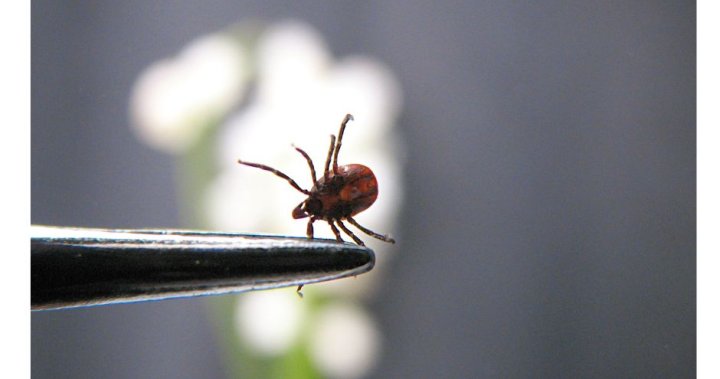Tick season is currently in full swing in Saskatchewan, and the veterinary college at the University of Saskatchewan is working to educate pet owners on how to protect themselves and their animals from ticks. Veterinary microbiology professor Emily Jenkins emphasizes the importance of removing ticks before they attach and engorge on a host. She notes that there has been a surge in tick activity, particularly during breaks between rain showers, as ticks tend to come out during these periods. Ticks often attach themselves to dogs in areas where they can hide and avoid being scratched off, such as the armpits and ears. Jenkins recommends using oral and topical medications for dogs and cats to provide up to a month of protection from ticks.
It is advised for pet owners to consult with a vet before purchasing tick prevention products from pet stores, as prescription products are typically more effective and have been rigorously tested. Jenkins stresses the importance of reading the fine print on these products to ensure they are labeled for the specific types of ticks found in the region. It is also essential for pet owners to regularly check their pets for ticks, particularly in hidden areas where ticks are known to hide. Additionally, individuals should conduct thorough tick checks on themselves after spending time outdoors in grassy areas, paying attention to areas like the elastic bands of socks, waistbands, hair, and behind ears.
USask utilizes a public submission service to monitor the tick population in Saskatchewan each year. Members of the public are encouraged to send pictures of ticks found on themselves or their pets to the university for tracking purposes. Jenkins mentions that the university typically receives between 400 and 500 eTick submissions around this time of year, with about 450 submissions already received. While only one black-legged tick, known for carrying Lyme disease, has been reported via eTick this year, Jenkins notes that this type of tick is more active in the fall. The rainy weather has made it challenging for the university to conduct fieldwork to track the tick population accurately, which may impact the reported numbers.
In conclusion, the University of Saskatchewan’s veterinary college is actively working to educate pet owners on tick prevention and safety measures during tick season. By regularly checking pets for ticks, using prescribed medications for prevention, and conducting thorough tick checks on themselves, individuals can reduce the risk of tick-borne illnesses. The public submission service offered by USask provides valuable data on the tick population in Saskatchewan, allowing for better monitoring and understanding of tick activity in the region. Despite challenges posed by rainy weather, efforts to track and manage tick populations continue to be a priority in ensuring the health and well-being of both pets and humans.


